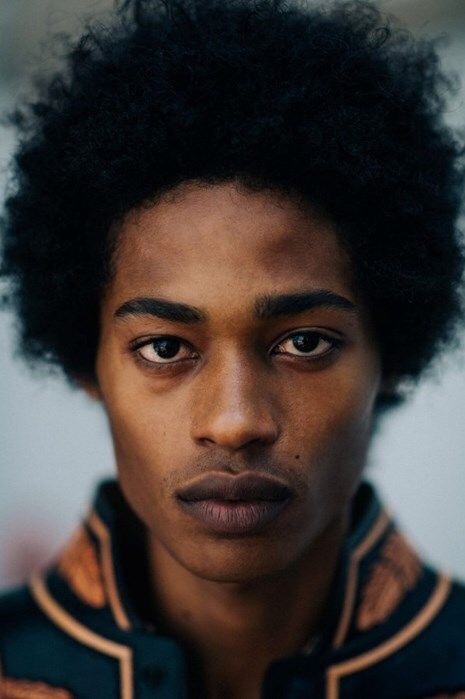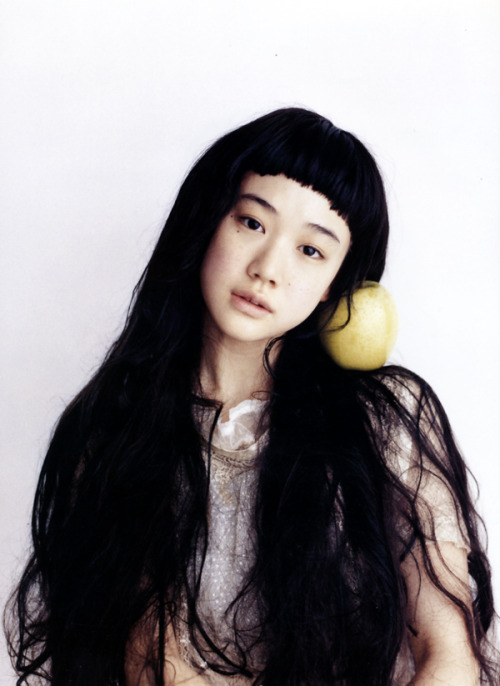#characterization
Characterization: Kind vs Nice
I often see ‘nice’ characters described as ‘kind’ and it annoys me, so let’s talk about it!
‘Nice’ is a generic, default term that you can use to describe most people. Most people are pleasant to others, don’t delight in causing pain or suffering, and are happy to do a simple task for another person. Because of this, when writing characters, ‘nice’ is arguably the default. It is a conscious choice to have a character that acts in a mean or rude way.
For example, if someone says, “Hey, can you hand me that paper?” most people grab the paper and hand it over. If your character won’t, then that is something that makes them stand out as a bad or unlikable person.
Kindness, on the other hand, is a far rarer trait. Kind people are the advanced version of nice. Kind people actively sacrifice things for the sake of others and enjoy doing it. For example, if a kind person hears that a friend is moving, then they will offer to help without being asked. A kind person is always looking to make sure others feel included. A kind person loves to share or take care of others. They take nice and make it an active trait instead of a passive one.
Why this matters is that you often hear the word ‘kind’ applied to ‘nice’ characters. Characters that are never shown to be kinder than the average person. If one of a character’s defining traits is ‘kind’ then you need to make them kind, not just nice. For an example of this, let’s talk about Cinderella. Specifically the live-action Disney version from 2015.
In this film, Cinderella has this mantra that she repeats over and over again: “have courage, be kind” and it drives me batty because she’s never shown to kind! She’s just an averagely nice person. Let’s give a specific example here and talk about how you show that a character is kind in a meaningful way.
In the movie, there is a scene where a beggar woman asks Cinderella for some milk. Cinderella then gives the woman a little milk from a full bucket. This is framed as a way to show how kind Cinderella is and it sort of works. She was upset at the time when this happened and sharing the milk was a nice thing to do. However, this is not the kind of scene that makes you appreciate just how special this character is because the cost of being kind is so minimal. Sharing the milk is something that a lot of people would do as long as they felt safe and had food available to share. Not sharing the milk would arguably put Cinderella in the same situation that The Beast was in when he got cursed in Beauty and the Beast. He was asked for a low effort showing of kindness and the fact that he wouldn’t even do this simple thing proved that he was a terrible person.
So how do you make this scene an act of kindness instead of basic human decency?
Well, there are a few ways!
1. In the scene, Cinderella has a full bucket of milk to share from and there’s no implication that she’s limited on how much food she can have. A way to make this scene feel like a real act of kindness is to have her share something that she only has a little of. Continuing with our Disney theme, think of the scene in Aladdin where he steals a loaf of bread and then gives it to some hungry children even though that was supposed to be his lunch. That is a noticeable act of kindness whereas sharing food when you have excess of it really isn’t.
2. The beggar woman only shows up in this scene. If you change that and have her be a reoccurring character instead, then you can establish that Cinderella’s stepmother has forbidden Cinderella to give the beggar woman food. This makes the scene an act of defiance where Cinderella is risking punishment to do what is right and help another person.
3. Have the beggar woman ask for food when there isn’t anything available to eat, meaning that Cinderella has to cook for her or go out to the garden and pick something. This once again elevates the act from a simple thing that’s easy to do with minimal personal cost to something that requires real time and effort.
Now, do keep in mind, kind doesn’t have to mean pushover. It can, but you it doesn’t have to. You can be kind and have standards, too. That’s actually a good thing to keep in mind when writing kind characters as it often makes for a relatable character arc. You can start with a character that’s a little too giving and have them learn how to value themselves while still being true to their kind nature. You can also just have a badass character who’s a delight to everyone, but don’t cross them or you will regret it. Kind people are also allowed to dislike others. They don’t have to be everyone’s friend. and they don’t even have to be outgoing!
Anyway, that’s it for this one! Write your characters however you want, just don’t go telling me that a person is ‘kind’ for simple acts of basic human decency.
I read a critique of a book that compared the characters to the relative popularity/interest level in Loki and Thor, saying that Loki is more interesting because he has conflicts and changing/growing motivations and desires he pursues that come from within, whereas Thor is basically content with his life of drinking, fighting and sex, and only reacts to external threats. I can see their point. At the same time, point one is that there’s nothing wrong with external threats driving an adventure narrative. That’s a valid and often interesting story structure. In fact, it’s arguably necessary for a serialized adventure story. Point two is that basically happy and well-adjusted people can have growth and interesting motivations and reactions… they just happen differently, or more subtly and slowly perhaps.
From what I can tell, the problem with that book’s main character was that she was ultimately not used in an interesting way by the narrative, and nothing super interesting happened for her to react to or grow from. Thor is different ‘cause you can do almost anything with a comic superhero character in general and Thor in particular, as we can see even in the range of tone and subject matter in current Marvel Thor movies. I mean, most stories that care about plot basically need a main character constructed like Thor, while antagonists and secondary characters are more free to have overarching agendas. At the same time, putting that kind of hero into a smaller, more character-driven story is also possible, as a lot of fanfic demonstrates.
Anyway, this makes me wonder what the 'secret’ of making a naturally well-adjusted character like Thor interesting in a smaller story would be. Basically, what if the stuff the main character has to react to is just… not that gripping, or kind of predictable, or even not the point? Does the character have to be dramatic in and of themselves then?
The main 'secret’ is the relationship/relationships developed between the characters, as far as I can tell. The 'main character’ is not the point; the dynamic is the point of interest. That’s not to say I actually think only striving, conflicted characters like Loki are truly interesting. Thor is interesting! You can’t really be 'too boring’ or 'too normal’ for a story to be great; that’s actually ridiculous. Being conflicted and intense as a person is essentially just easier. It’s a shortcut, basically. As a writer, that story writes itself. It’s just… with someone like Thor and without an external source of conflict, I think suddenly you have to have some subtlety and attention to detail, noticing all the tiny things in life that actually matter and make it feel 'real’ and important as you’re living it. You can reveal hidden depths and subtleties in any character, even if they’re just going out to a bar with friends. It’s just… easy to fail, and hard to keep the reader’s attention.
I think a lot of writers also write 'normal’ and well-adjusted characters without being very intentional about it, unlike good fanfic writers, who generally are fixated and obsessed with every tiny detail about Thor. Like, the writer may use broad strokes too much with such a character, or not be good enough at capturing small, mundane moments in an elegant, vivid manner. They may even believe their smaller stakes plot may fool readers into thinking it’s super important. Essentially, the problem is generally the writer not respecting their readers’ intelligence and not being interested enough in their own main character.
There are certain things in a post or book review (usually on Amazon) that tell me that the fan in question is projecting rather than actually seeing the story or characters clearly. Today I saw pretty much all of these in reviews to Sapphire Flames by Ilona Andrews, which is a spin-off to a popular urban fantasy series:
- Why does the love interest like the protagonist (if I don’t like the protagonist and/or it’s not spelled out)
- Why is the protagonist overly like the former protagonist, who is her sister (or too unlike the protagonist, whose personality was better)
- Why would any ostensibly competent adult character behave irrationally with someone they don’t know that well but like? Clearly it’s bad writing
- Why would any ostensibly competent adult make mistakes or irrational choices we disagree with or find silly? The characters can only be likable or respected if they’re always sensible and mature, after all. Clearly it’s just more bad writing
- How could the old favorite, the former protagonist, possibly have failed to do X rational/logical thing? Clearly it’s out of character
- How could the main romantic relationship in an ongoing series not be resolved by the end of the first book? Clearly it’s a major plot hole
- How could a minor character’s motivation possibly be what the text suggests, if the subtext says it’s in fact something else? Clearly that too is a plot hole
- How could one pick up up on these seeming contradictions or subtext and not have it be unintentional? Clearly, only the reviewers are smart, not the authors.
Crazy stuff. It’s interesting because I actually have read another genre book by a usually decent author where the characters did do rational things and behaved reasonably even in their romantic relationship, at least 90% of the time. The only time I was remotely invested in the story was the brief period where the love interest was behaving irrationally, but that was resolved easily enough and without even overly hurt feelings. All these people can’t even imagine how mind-numbing it is to read about the rational behavior of reasonable people, and then somehow end up asking yourself why the love interest likes the female main character, too. So it’s not like I can’t relate, per se. In this case, at least it’s just that he never shows much impulsivity and it’s based on a magical mate bond, so the later declarations of love just feel really out of left field. It’s more like they’re glad they got all that angsty beginning relationship stuff all but skipped over and can now be reasonable and dependable together. Close enough to love, surely? Conversely, Andrews’ love interest may also be a competent adult who’s focused primarily on work and/or his mission, but he’s portrayed as a passionate Italian man for all that. He’s human.
I should note, characters whose behavior is truly irrational are maddening to read. Here, I just mean it ‘doesn’t make sense in context’, though. Usually it either involves a dependence on a character’s overreactions to get the character to do dangerous but plot-needed things consistently, or the character simply doesn’t process some basic, logically apparent aspect of the plot until it’s conveniently too late. That’s very, very frustrating. But way too many people forget that while it’s bad writing to force irrational behavior to drive plot (known colloquially as a female protagonist being TSTL), the fact is that we are all TSTL sometimes. The trick to a character acting irrational and making it work, as Ilona Andrews demonstrates, is twofold: have the character (or others) be as aware of this failing as possible, and contrast the irrational behavior with some instances of competence and common sense. Note, I’m saying that a character being ‘rational’ enough is about stuff like not constantly running into danger with no weapons, or failing to follow up on misunderstandings. It’s not about thinking five steps ahead or not making emotionally driven decisions in general.
The fact that some people don’t get this only suggests they’re projecting, or their own decisions are probably generally not emotionally driven, in the case of this particular issue. Of course, this doesn’t bother me as much as times where people point out basic subtext as if it’s a critique to notice those things, rather than an observation of an intentional aspect of the book. Sometimes it’s literally like some readers (or worse, writers) have never heard of subtext before. This leads both to bad writing and bad reading.
Discarded AFM tips.
Atomic Force Microscopy, or AFM, is a technique by which a small mechanical probe is scanned across a sample to create a height map. This technique has very high resolution, less than a nanometer, depending on what kind of tip is being used, and can be done in ambient conditions (no need for vacuum). AFM is useful for getting roughness data and measuring film thickness, and can be combined with other microscopy techniques to get a complete picture of your device.
AFM probes often get damaged or dirty, resulting in “tip graveyards” like the one shown here.
Post link
If your character has a trait you consider one of their key features and it is never challenged in anyway, that trait will probably have about as much impact as their “tiny mole on their left buttcheek” trait.
For that trait NOT to fall totally flat, one or more of these things need to happen:
- The trait exacerbates a situation in a bad way. (An extremely honest and trusting character reveals an important secret to the Big Bad’s lackey)
- The character is given a choice to either act according to their traits or to subvert them. Often the subversion has the better outcome. They either maintain their trait and take a risk, or character development ensues. (A greedy character must escape. Leaving behind their riches goes against their very being, but it would allow them to escape easier. If they try to take some of their treasure with them, they do so at massive risk.)
- The character is put in an environment or must work with a person that opposes their trait. (An extremely tidy person must live in their slob cousin’s filthy apartment for a week. / The character has a debilitating fear of being alone and they are stranded on their own on an island.)
- The character is put in a situation that requires them to suppress their trait (A hotheaded character needs to have polite discourse with someone they hate)
Character Bios:
Silverage! The Superhero from the Smallest State! To the outside world he’s a slightly baffling mix of hyper capable and just unendingly clumsy, if he’s not taking down flying robots or giant roaming monsters he’s tripping over his capes and getting shot by like… regular muggers.
To us, we know him as the symbiotic creation of Matthew Hext and a cosmic energy alien named ‘Super’ (or that’s the nearest we can understand) - his clumsiness is derived from his human half, and his energy powers and various other assorted abilities stem from the alien inside him.
Strengths: Plasma absorption and redistribution, Super Strength, Super Reaction Time, Enhanced Durability, Enhanced Healing, Genuinely Invested in being a Good Person
Weaknesses: Must adapt before he’s immune to a new kind of attack, still can’t fly, still not fully bullet proof, still a 14 year old boy at heart
Emotional Strengths: Has all the irrepressible hope and courage
and untainted kindness of a 14 year old boy.
Emotional Weaknesses: Has all the critical thinking skills
and emotional maturity of 14 year old boy.
Post link
The Edges Of Dubai by Trey Ratcliff
Detail of the image The Edges Of Dubai by Trey Ratcliff licensed under CC BY-NC-SA 2.0.
Post link
Actually
The question I get the most is how I write characters that feel like real people.
Generally when I’m designing a human being, I deconstruct them into 7 major categories:
1. Primary Drive
2. Fear: Major and Secondary
3. Physical Desires
4. Style of self expression
5. How they express affection
6. What controls them (what they are weak for)
7. What part of them will change.1. Primary Drive: This is generally related to the plot. What are their plot related goals? How are they pulling the plot forward? how do they make decisions? What do they think they’re doing and how do they justify doing it.
2. Fear: First, what is their deep fear? Abandonment? being consumed by power? etc. Second: tiny fears. Spiders. someone licking their neck. Small things that bother them. At least 4.
3.Physical desires. How they feel about touch. What is their perceived sexual/romantic orientation. Do their physical desires match up with their psychological desires.4. Style of self expression: How they talk. Are they shy? Do they like to joke around and if so, how? Are they anxious or confident internally and how do they express that externally. What do words mean to them? More or less than actions? Does their socioeconomic background affect the way they present themselves socially?
5. How they express affection: Do they express affection through actions or words. Is expressing affection easy for them or not. How quickly do they open up to someone they like. Does their affection match up with their physical desires. how does the way they show their friends that they love them differ from how they show a potential love interest that they love them. is affection something they struggle with?6. What controls them (what they are weak for): what are they almost entirely helpless against. What is something that influences them regardless of their own moral code. What– if driven to the end of the wire— would they rejectsacrificing. What/who would they cut off their own finger for. What would they kill for, if pushed. What makes them want to curl up and never go outside again from pain. What makes them sink to their knees from weakness or relief. What would make them weep tears of joy regardless where they were and who they were in front of.
7.WHAT PART OF THEM WILL CHANGE: people develop over time. At least two of the above six categories will be altered by the storyline–either to an extreme or whittled down to nothing. When a person experiences trauma, their primary fear may change, or how they express affection may change, etc. By the time your book is over, they should have developed. And its important to decide which parts of them will be the ones that slowly get altered so you can work on monitoring it as you write. making it congruent with the plot instead of just a reaction to the plot.
That’s it.
But most of all, you have to treat this like you’re developing a human being. Not a “character” a living breathing person. When you talk, you use their voice. If you want them to say something and it doesn’t seem like (based on the seven characteristics above) that they would say it, what would they say instead?
If they must do something that’s forced by the plot, that they wouldn’t do based on their seven options, they can still do the thing, but how would they feel internally about doing it?
How do their seven characteristics meet/ meld with someone else’s seven and how will they change each other?
Once you can come up with all the answers to all of these questions, you begin to know your character like you’d know one of your friends. When you can place them in any AU and know how they would react.
They start to breathe.
This is an excellent resource (that I will now be using) for not only writing original character but fanfiction, too. Getting the characters right is always a little tricky especially if it’s something you haven’t experienced/written yet or if it’s just a tough character to work with and write properly.
Hunter!Jim is a manifestation of Jim’s sense of guilt.
That’s why Hunter!Jim:
-Shows up when Jim is panicking about Love-struck!Jim being at the Nuñez barbecue; Jim’s primary feeling in that moment is guilt over Trollhunter stuff spilling over onto something that was supposed to be ‘normal’.
-Goes on that rant about ‘protecting Arcadia’ and how maybe he should run for political office, which would actually interfere with his capacity to trollhunt if he followed through with it; Jim feels like he’s supposed to be able to handle every pressure put on him and that it’s his job to take care of everything.
-Tries to break up with Claire to focus on Trollhunting full-time; Jim feels bad that he can’t do classical boyfriend-girlfriend activities with Claire, because his job gets in the way, and Jim has also had it thrown in his face a few times that his feelings for Claire influenced his decision to rescue Enrique and risk freeing Gunmar.
-Yells at Jim about possibly letting Gunmar out, and how Jim can’t balance both worlds; things Jim has struggled with for the whole season and the whole series, respectively.
Hunter!Jim is, literally, Jim beating himself up for not being able to Protect Everyone All The Time or live up to every promise he ever makes to others and himself.
Wow. These are some pretty good points



























